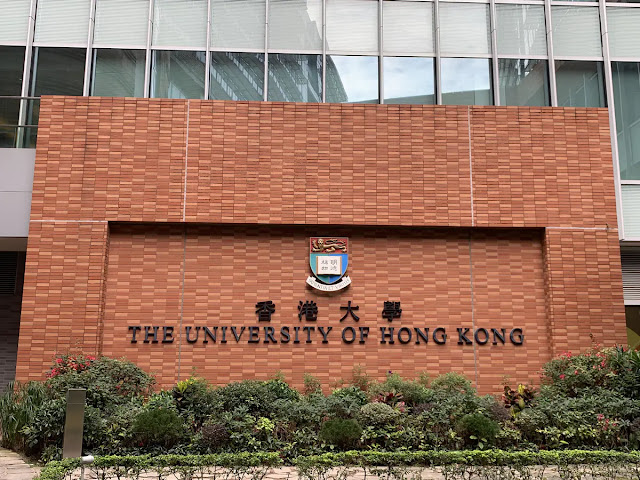Chinese Fmaous Universities
Peking University
Peking University (abbreviated as PKU) is a key research university in Beijing, China. As the first modern national university in China, Peking University was founded in the late Qing Dynasty in 1898 and was first known as the Imperial University of Peking. It was the first national comprehensive university in China and the highest educational administration in China at that time. After the Xinhai Revolution, it was renamed Peking University in 1912.
The main campus of Peking University is called Yan Yuan. Located in Haidian District, the western suburb of Beijing, it covers a total area of 2,740,000 square meters (274 hectares) and is close to the Old Summer Palace and Summer Palace. Its main landscapes include Weiming Lake and Boya Tower. Peking University Library is one of the largest libraries in the world with more than 8 million books.
Peking University prides itself on its outstanding faculty, including 48 Chinese Academy of Sciences, 9 Chinese Academy of Engineering(CAE) and 21 Third World Academy of Sciences(TWAS). Peking University and Tsinghua University have been rated as the top two academic institutions in China. It is one of the most competitive universities for undergraduate enrollment in China. Peking University is a Class A institution under the national Double First Class University program and one of the institutions of higher education with the strongest comprehensive strength in the Asian Pacific region. Its set goal is to become one of the first-class universities in the world in the future.
Tsinghua University
Tsinghua University is a key research university located in Beijing and member of the elite C9 League of Chinese universities. It is generally believed that Tsinghua University and Peking University are the two best universities in China. Tsinghua University was founded in 1911, formerly known as "Tsinghua College". In 1925, Tsinghua launched its four-year undergraduate program. The school was renamed "National Tsinghua University" in 1928. With the strong support of the state and society, through the implementation of the "211 Project", the "985 Project" and the "Double First-Class (First -Class University & First-Class Disciplines)",Tsinghua University has achieved great progress in terms of personnel training, scientific reseach, social services, cultural heritage innovation, and international cooperation and exchanges. At present, Tsinghua University boasts 59 departments in 20 colleges, with 15,000 faculty members and 48,000 students. It has become a comprehensive research-oriented university with 11 disciplines, including science, engineering, literature, art, history, philosophy, economics, management, law, education, and medicine.
Adhering to the motto of "Self-discipline and Social Commitment" and the spirit of "actions speak louder than words", Tsinghua University is committed to nurturing global citizens who will thrive in today's world and become tomorrow's leaders. Through the pursuit of excellence in education and research, Tsinghua is developing innovative solutions to help solve pressing problems in China and the world. Tsinghua University has been rated as one of the top academic institutions in China, Asia and the world. Since its inception, Tsinghua University has trained many outstanding leaders for China's political, business, academic and cultual circles.
The University of Hong Kong
The University of Hong Kong (HKU) is the oldest institution of higher education in Hong Kong. On March 16, 1910, the then Governor of Hong Kong, Sir Frederick Lugard, laid the foundation stone for the university. On March 30 of the following year, the University was first incorporated in Hong Kong as a self-governing body of scholars by the University Ordinance. On March 11, 1912, the university officially enrolled students. At the beginning, the University of Hong Kong was small. The University of Hong Kong held its first graduation ceremony in December 1916, when there were only 23 graduates.
Today, the University of Hong Kong has ten academic departments with English as the main language of instrtction. The University of Hong Kong has strong scientific research in the fields of science, dentistry, biomedicine, education, humanities, law, economics, business administration, linguistics and political science. Since its establishment, the University of Hong Kong has been cultivating famous people from all walks of life for the Hong Kong community. Among the early alumni of the college, the most famous is Mr. Sun Yat-sen, who led the Chinese Revolution of 1911 and changed China from an empire to a republic. Mr. Sun Yat-sen received modern education in Hong Kong and was the first graduate of Hong Kong College of Medicine for Chinese, which was later merged with the Faculty of Medicine of the University of Hong Kong and became the oldest medical education institution in Hong Kong. Therefore, Sun Yat-sen has naturally become one of the most outstanding alumni of the University of Hong Kong.
The University of Hong Kong has always been considered as one of the most international universities in the world and one of the most prestigious unversities in Asia. Currently, the University of Hong Kong ranks 25th in the QS World University Rankings and is ranked 27th in The Times Higher Education World University Rankings.
















No comments